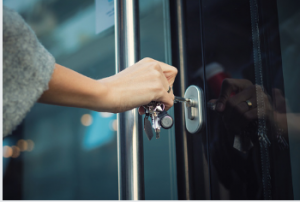Podiatry is the branch of medicine that focuses on foot and ankle disorders. In addition, a podiatrist is also known as a foot doctor. Those interested in becoming a foot doctor will want to learn more about the career outlook, education requirements, and licensing requirements. The article will also discuss the educational requirements for a career in podiatry. So read on to learn more! And make sure to check out our career outlook video!
 Information about podiatry
Information about podiatry
Podiatry is a branch of medicine that focuses on disorders of the feet, ankles, and lower extremities. This branch of medicine is viral among celebrities and sports stars. It is a growing career, and you may want to learn more about it to help you make the right decision for yourself. Here are some common foot problems and conditions, as well as information about becoming a podiatrist. And keep reading for more tips!
When it comes to medical records, podiatrists have to maintain records for six years. This period begins when the client turns 22, but the records need to be kept for as long as a patient stays with the podiatrist. There are a few ways to ensure the confidentiality of your medical information. First, ensure that your practitioner follows all the regulations of the State or Territory in which you practice. Otherwise, you might face disciplinary action.
Career Outlook
Currently, there are about 11,000 podiatrists in the United States. The job market is projected to grow by 10.9% between 2016 and 2026, but CareerExplorer rates podiatric doctors with a “D” employability score, meaning that employment opportunities will be weak shortly. The United States will need approximately 3,900 new podiatrists over the next ten years to replace those who retire.
The number of people aged 65 and older is expected to increase as the growing population ages and experiences foot-related problems. Additionally, many patients with chronic conditions, such as diabetes and high blood pressure, are growing. Podiatric physicians will be needed to treat patients with foot-related problems and prevent or treat chronic conditions. The demand for a podiatrist will grow based on these factors.
A podiatrist is a health professional specialising in diagnosing, preventing, and treating disorders of the foot, ankle, and related leg structures. Although the term originates in North America, it is now commonly used to refer to all practitioners of podiatric medicine throughout the English-speaking world. If you have questions about the profession, you can contact a podiatrist for an appointment. During the initial visit, your doctor will evaluate the condition and discuss treatments.
Education requirements
A doctor of podiatry is a physician who specialises in the diagnosis and treatment of disorders of the foot and ankle and their related leg structures. While the term “podiatrist” originated in North America, it is now accepted by practitioners of podiatric medicine throughout the English-speaking world. Upon graduation from school, a podiatrist must take a minimum of five years of postgraduate study in podiatric medicine.
To become a podiatrist, aspiring doctors of podiatry SA must first complete four years of pre-medical study, which typically involves many math and science courses. Most pre-med programs also require English and written communications coursework since a strong command of language skills is essential in any helping profession. Additionally, all applicants to medical school must pass the Medical College Admission Test (MCAT), which is required of all students in any medical field.
Licensing requirements
To practice podiatry SA, you must meet licensing requirements in the state where you intend to work. The requirements of the state’s licensing board are outlined on the National Board of Podiatric Medical Examiners (NBPME) website. In addition, you must complete the National Boards – Part II examination to apply for a license. Part II of the exam consists of multiple-choice, matching, and true-false questions that measure your knowledge of scientific and clinical principles. Part III of the exam involves an oral examination of 30 minutes worth 400 points.
 Insects are a nuisance indoors and out. Not only do they ruin outdoor activities, but they are also an essential source of disease. Mosquitoes, mainly, are notorious for carrying diseases such as the Zika virus. So it makes sealing your doors and windows a critical part of pest control. These doors and windows can help you eliminate the problems with insects and are a great way to increase your home’s safety.
Insects are a nuisance indoors and out. Not only do they ruin outdoor activities, but they are also an essential source of disease. Mosquitoes, mainly, are notorious for carrying diseases such as the Zika virus. So it makes sealing your doors and windows a critical part of pest control. These doors and windows can help you eliminate the problems with insects and are a great way to increase your home’s safety.